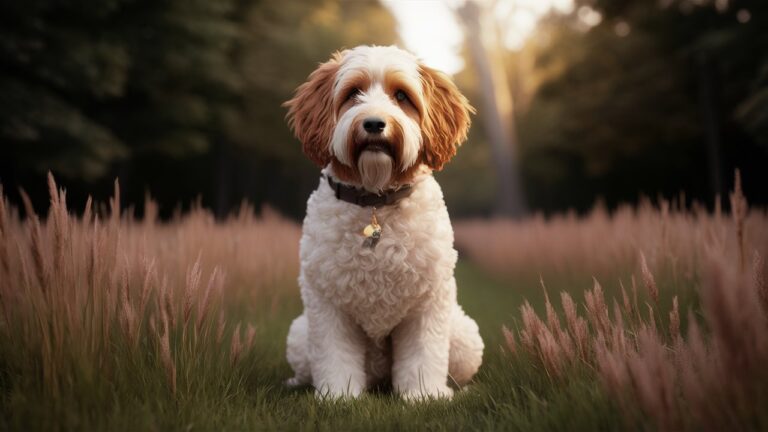The Indomitable Tibetan Mastiff: 5 Compelling Reasons It’s Majestic and Powerful
The Tibetan Mastiff is a breed that exudes majesty and mystery, a true embodiment of ancient guardianship. This breed, known for its imposing size and dignified demeanor, has been a loyal companion and protector in the high Himalayas for centuries. In this article, we delve into the fascinating world of the Tibetan Mastiff, exploring its history, characteristics, care requirements, and why it has captured the hearts of dog enthusiasts worldwide.
Table of Contents
ToggleHistorical Background: Guardians of the Himalayas

The Tibetan Mastiff, or “Do-Khyi” in Tibetan, meaning “tied dog,” has a history shrouded in legend and lore. These dogs have been bred for thousands of years by nomadic cultures of Tibet, China, Nepal, and India to guard livestock from predators such as wolves, leopards, and bears. Their role as guardians extended to Tibetan monasteries, where they were often stationed to protect sacred grounds.
One of the earliest records of the Tibetan Mastiff dates back to 1121 B.C., when they were given as gifts to the Chinese emperor. Marco Polo, the famed Venetian explorer, described them as “tall as a donkey with a voice as powerful as that of a lion.” Such historical references underscore the breed’s longstanding reputation as a formidable protector.
Physical Characteristics: Strength and Majesty
Tibetan Mastiffs are large, powerful dogs with males weighing between 90 to 150 pounds and females ranging from 70 to 120 pounds. Their thick double coat, which can be black, brown, blue-gray, or gold, is suited to withstand the harsh climates of the Himalayas. This dense fur creates a mane-like appearance around their neck, adding to their majestic and somewhat intimidating presence.
Their expressive eyes, often dark brown, exude intelligence and a quiet confidence. The broad head, strong jaw, and muscular build of the Tibetan Mastiff contribute to their ability as protectors. Their gait is deliberate and dignified, reflecting their calm yet commanding nature.
Temperament: The Independent Guardian
Tibetan Mastiffs are known for their independence and strong-willed nature. They are naturally protective and can be territorial, making them excellent guard dogs. However, this protective instinct also means they require a knowledgeable and firm owner who can establish clear boundaries and provide consistent training.
One personal anecdote that highlights their protective nature comes from a family in Colorado. They recounted how their Tibetan Mastiff, Lhamo, would patrol the perimeter of their property every evening, ensuring no intruders could approach unnoticed. Despite her imposing presence, Lhamo was gentle and affectionate with the family, showcasing the breed’s dual nature as both guardian and loyal companion.
Socialization is crucial for Tibetan Mastiffs to prevent them from becoming overly protective or aggressive. Early exposure to various people, environments, and other animals can help them develop into well-rounded adults.
Training and Exercise: A Balanced Approach

Training to this dog breeds can be challenging due to their independent nature. Positive reinforcement methods work best, as harsh training techniques can lead to stubbornness and resistance. Consistency and patience are key, and training should begin at an early age to instill good behavior.
Exercise requirements for Tibetan Mastiffs are moderate. While they enjoy daily walks and playtime, they are not as high-energy as some other breeds. However, they do need enough activity to prevent boredom, which can lead to destructive behavior. Their independent streak means they are often content with some alone time, but they also thrive on human companionship and interaction.
Health and Lifespan: Caring for a Tibetan Mastiff
Tibetan Mastiffs are generally healthy dogs, but like all breeds, they are prone to certain health conditions. Common issues include hip dysplasia, elbow dysplasia, hypothyroidism, and eye anomalies. Regular veterinary check-ups and a balanced diet are essential to maintaining their health.
Their thick coat requires regular grooming to prevent matting and reduce shedding. Brushing a few times a week is usually sufficient, but during the shedding season, more frequent grooming may be necessary. Bathing should be done as needed, but not too often, to avoid stripping the coat of its natural oils.
The lifespan of a Tibetan Mastiff is typically between 10 to 14 years. Providing them with proper nutrition, exercise, and healthcare can help ensure they live a long, healthy life.
The Tibetan Mastiff in Modern Times: A Growing Popularity
In recent years, this dog breeds has gained popularity outside its native regions. Their majestic appearance and loyal nature have made them sought after by dog enthusiasts and breeders. However, this popularity has also led to some unethical breeding practices aimed at capitalizing on their high demand.
Prospective owners should seek reputable breeders who prioritize the health and temperament of their dogs over profit. Rescue organizations and shelters may also have Tibetan Mastiffs in need of a loving home.
One notable example of their growing popularity is the case of a Tibetan Mastiff named Big Splash, who was sold in China for a record-breaking $1.5 million in 2011. This sale highlighted both the allure and the potential pitfalls of the breed’s rising fame.

Conclusion: Embracing the Tibetan Mastiff
The Tibetan Mastiff is a breed that embodies strength, loyalty, and an ancient heritage. Their imposing presence and protective instincts make them excellent guardians, while their loyal and gentle nature endears them to their families. Owning a Tibetan Mastiff is a commitment that requires understanding and respect for their unique traits.
For those who can provide the necessary care, training, and socialization, the Tibetan Mastiff offers a rewarding companionship that is both majestic and deeply fulfilling. As guardians of the Himalayas, these dogs continue to capture the imagination and hearts of people around the world, proving that their ancient legacy is very much alive today.
Whether you are considering bringing a Tibetan Mastiff into your home or simply fascinated by this remarkable breed, understanding their history, characteristics, and needs is the first step towards appreciating their enduring legacy as one of the world’s most majestic and loyal guardians.





